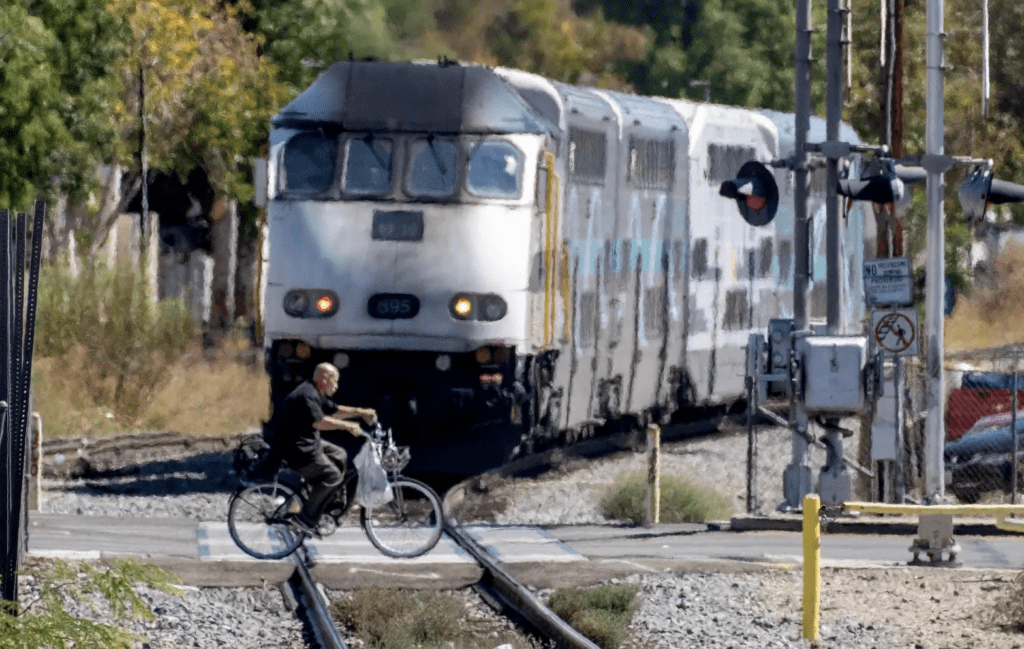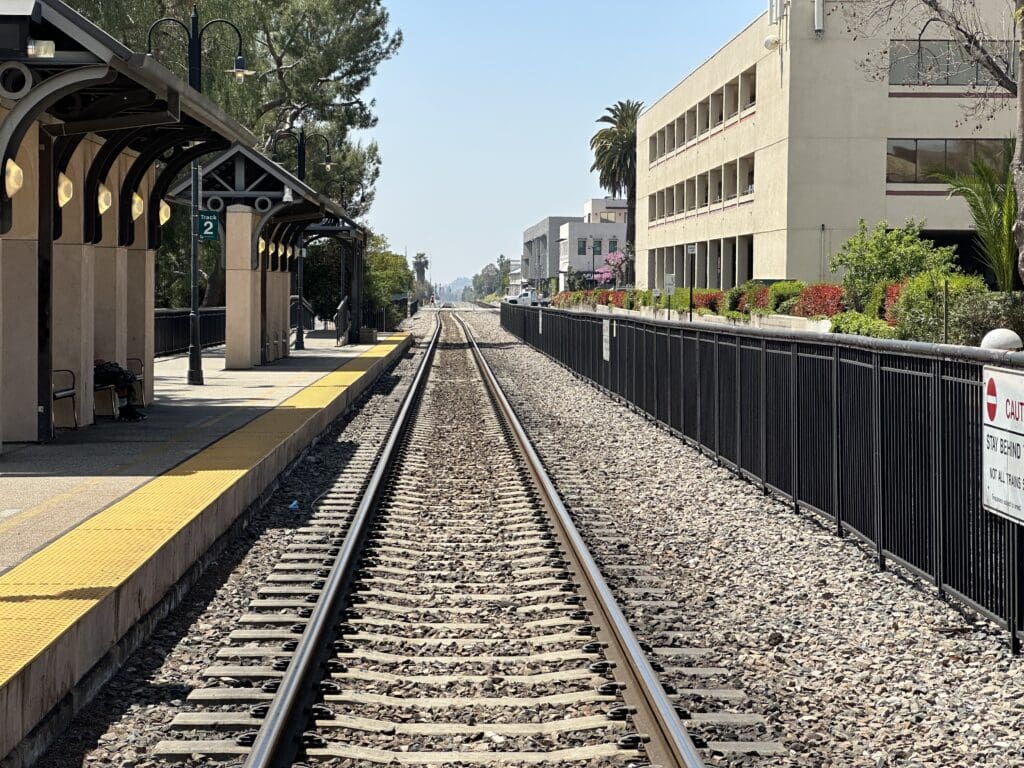The Safe Community Project has been retained by the Claremont McKenna College to produce a report on rail safety in Claremont and surrounding areas. This report will aid Claremont McKenna leadership in determining what steps may be required to keep faculty, students, and neighbors safe in the event of a rail disaster.
Several railroad lines serve the City of Claremont, some of which are located near the Claremont McKenna College campus. These lines are operated by Metrolink and the Burlington Northern Santa Fe (BNSF) railroads. Metrolink provides passenger services, while BNSF provides freight rail services.
To the south of Claremont, there are mainline rail lines that are crucial infrastructure for transporting freight from Los Angeles to other destinations in the east, including the Colton rail yard. These lines are operated by the Union Pacific Railroad (UP), and all UP traffic, except special management and fan trains, are freight-based. Metrolink also uses these lines. There are several railroad lines that serve the City of Claremont, and some of them are located near the Claremont McKenna College campus. These lines are operated by Metrolink and the Burlington Northern Santa Fe (BNSF) railroads. Metrolink provides passenger services, while BNSF provides freight rail services.
Adjacent Rail Risks

A heavily trafficked dual mainline rail corridor connects Los Angeles and San Bernardino, located just south of Claremont. This thoroughfare runs through Pomona and the southern edge of Montclair and has a higher potential for a significant rail disaster than Claremont directly. The Union Pacific Railroad and Metrolink operate trains on these mainline tracks, and there is a medium-sized rail yard just to the east of Montclair.
Union Pacific has a safety outreach program called “UP Cares,” which aims to prevent pedestrian and vehicle versus train collisions. Their goal is to have zero accidents, injuries, or fatalities involving employees, pedestrians, drivers, and trains. However, this initiative overlooks the most critical aspect of a rail disaster – a derailment caused by faulty tracks, equipment, or contents. While less likely, there is also the potential for a train versus train collision (as highlighted in the Challenges with Union Pacific section below).
Federal law mandates that common carriers, such as Union Pacific, transport hazardous materials, and railroads transport around 20% of the chemicals used in the United States. Union Pacific takes its responsibility seriously when it comes to transporting chemicals, and they have a Response Management Communications Center (RMCC) to respond to any rail-related disaster.
The Threat From Union Pacific

In February 2023, a train derailment occurred in East Palestine, Ohio, drawing attention to the condition of the United States rail system. Although some areas are well-maintained with new trackage, others are not as well-maintained. As a result, it is difficult to know what is happening on any given part of the rail system at any given time.
The United States has a higher rate of train derailments compared to other wealthy countries, with over 1,000 derailments per year. Railroad workers’ unions have been raising concerns about rail safety for years. While the media and general public are now paying attention to the issue, it has been an ongoing problem.
Train derailments can occur due to various reasons, such as damaged tracks, broken wheel bearings, overloaded freight cars, bad airlines, and collisions at crossings. The use of precision scheduled railroading (PSR) by Union Pacific and other interstate railroads may also be a contributing factor to some of the derailments. PSR aims to create longer freight trains with fewer crew members, which generates higher profits for shareholders. However, Union Pacific employees claim that this policy has led to a reduction in resources, maintenance, staffing, and track maintenance, putting the public at risk.
Previously, a long freight train was approximately one mile in length, with three or four locomotives in front and several additional engines pushing from mid-train or the back. With PSR, a one-mile train has become a three-plus-mile train, but crew sizes remain the same or even smaller. There are also fewer inspectors, maintenance personnel, and oversight.
Railways make money by hauling freight based on weight and distance. Longer trains carry more freight, generate more revenue, and require fewer employees. This is why railways have not designed modern trains but instead built longer trains using the same components as before.
Railways typically manage the narrative and control the area surrounding derailments. For example, Union Pacific downplayed the severity of the San Bernardino runaway train derailment in March 2023. The train was carrying 22,000 tons and derailed at well over 100 miles per hour. The media was told the train consisted of 55 cars, but it actually had 154 cars. The train was known for having maintenance challenges and was considered troublesome or even dangerous by its crews.
The Safe Community Project Approach

Gaining an understanding of the risks related to rail disasters is a complex issue overall, but there are some fundamental issues that are growing nationwide. MySafe:LA teams have already reached out to Union Pacific’s public relations and security officials to discuss the Claremont and San Bernardino communities. Likewise, efforts are underway to communicate with Metrolink and BNSF.
A MySafe:LA photographer, who captures a wide array of railroad operations, and the Executive Director toured the Claremont and San Bernardino regions. They captured operations on camera, noting the time of day, traffic, and other factors. As these sets of details are gathered, a database of information is developed, and primary and secondary risk targets are identified.
The final report will detail the risks from the direct impact of a rail disaster, as well as secondary risks, such as polluted or dangerous air quality from a nearby disaster. Developing a plan like this is right in our wheelhouse, and our team is extremely enthusiastic about the challenge.
